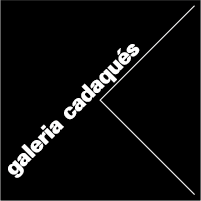
the time of myth is a tangential and polyphonic time. is tangential because it appears on the margins of the present, with which it cohabits, but always as a puncture in the distance, as a remote possibility that brushes reality at a single point, that fragile point where the real and the unreal caress each other and enter into conflict, and where it is easier to get lost than to find each other. This coexistence has nothing to do with the sinuosities of the imagination; as the modal logicians have taught us, since arthur n. Prior to kit fine, it is not that reality and myth are separate regions, but that both are rooted in the deep waters of common sense. on the other hand, myth is polyphonic because it springs from a plurality of voices, because it is constructed through anecdote and the different versions of the same story within a community.
In the work of both albert serra and román yñán (sant adrià de besòs, 1976) the community functions as the source and substratum of a mythical imaginary that constantly produces, reproduces and self-manages its narratives and images. A good example of this is the series self & son by yñán, which is part of a much larger cycle of photographs devoted exclusively to his family life (an open photographic diary in progress, very similar, in fact, to the cycle of mites i màscares). in this series, yñán – in an act of family role conversion that is, at the same time, a visual subversion – hands over the camera to his son tomás to portray the family on a day-to-day basis. self & son is a project that cannot be understood without its reverse side, this is happening, “a notebook”, according to the author, “where the line separating the father of the family from the photographer/artist is blurred and photography becomes a game”. Similarly, role swapping is a common practice during the shooting of andergraun films, where an art assistant may unexpectedly end up becoming an actor, or the executive producer may end up becoming an actor, or the executive producer may end up becoming an actor.
(montse triola), while acting, generates new situations within the film through comments between scenes, while she eats or while they put her wig on. for serra, the script is a cosa mentale and an atmosphere, a collective group and a series of emotional coordinates which, at a given moment, can serve to situate the action, but which in no case have to constrain it. román yñán’s photos capture these atmospheres very well, which mutate with each project – the atmospheres change, but the legends of the community remain the same: lluís carbó can play the role of quixote as well as that of the king magician, and lluís serrat incarnates a new character in each film: sancho (honor de cavalleria), Pompeu the servant (història de la meva mort), rainer werner fassbinder (els tres porquets) armin (liberté), etc.
mites i màscares is also a journey through these atmospheres, from the open skies and the solar joy of cavalleria’s honour to the nocturnal desire for liberté. román yñán contrasts the wefts of branches, leaves and trunks of the eucalyptus forest where the last film was shot with the portraits of the actors and actresses – an opposition that places the vegetative life of the trees and the erotic, mechanical drives of the libertines on the same ontological plane. Nature – human and non-human – is neither cruel nor savage; it simply is, grows, spreads or expires like a dry bush. tanto en yñán como en serra, muy a menudo, los elementos naturales operan como correlato de los personajes, ampliando o matizando las calidades psicológicas.
román yñán, as a regular collaborator on albert serra’s shoots, has documented a large part of the filmmaker’s world and his photographic work acts as a link between the radical cinema of the filmmaker from Banyoles and the freest and most direct photography.
the series mites i màscares unfolds a chronological arc that begins in 2004 with the filming of honor de cavalleria en los alrededores de sant climent sescebes y otras localizaciones del alt empordà (presentada dos años más tarde en la quinzaine des réalisateurs de cannes) and closes with the filming of liberté to the south of portugal in
septiembre de 2018 (estrenada recientemente en la sección un certain regard de cannes, donde se llevó el premio especial del jurado). the exhibition is divided into four photographic groups, each corresponding to a different film: honor de cavalleria (2006), el cant dels ocells (2008), història de la meva mort (2013) and liberté (2019). the colour, the textures and the photographic treatment of each group try to bring us into the particular sensation of the present of the shootings: the luminous asceticism of el cant dels ocellsthe chaotic and luxuriant exuberance of the història de la meva mort… with this photographic cycle yñán brings us closer to an experience that albert serra has always defended as incommunicable. the only law is the law of presence. and román yñán was there.
gabriel ventura
installation views








